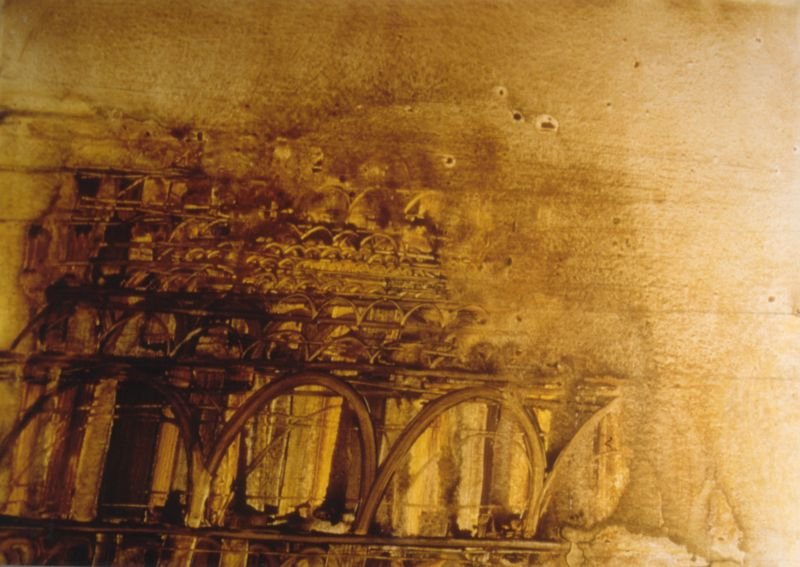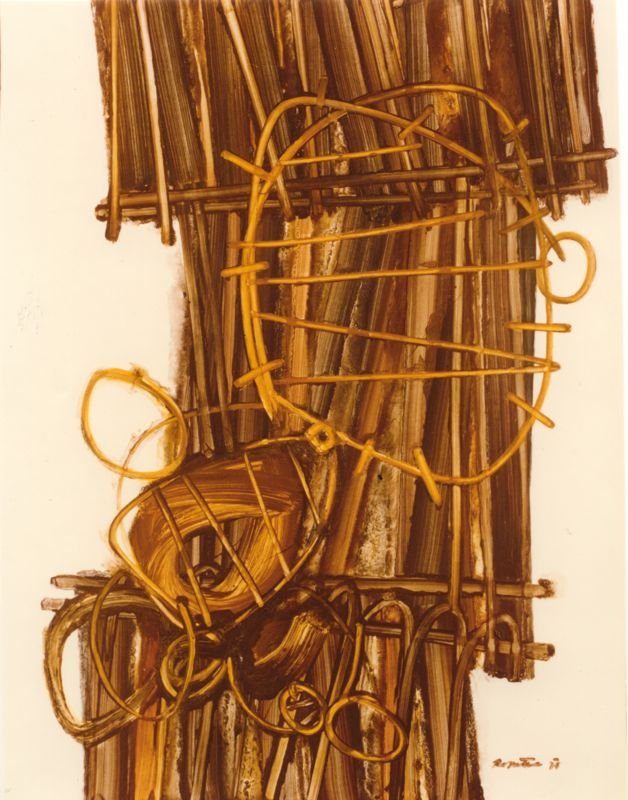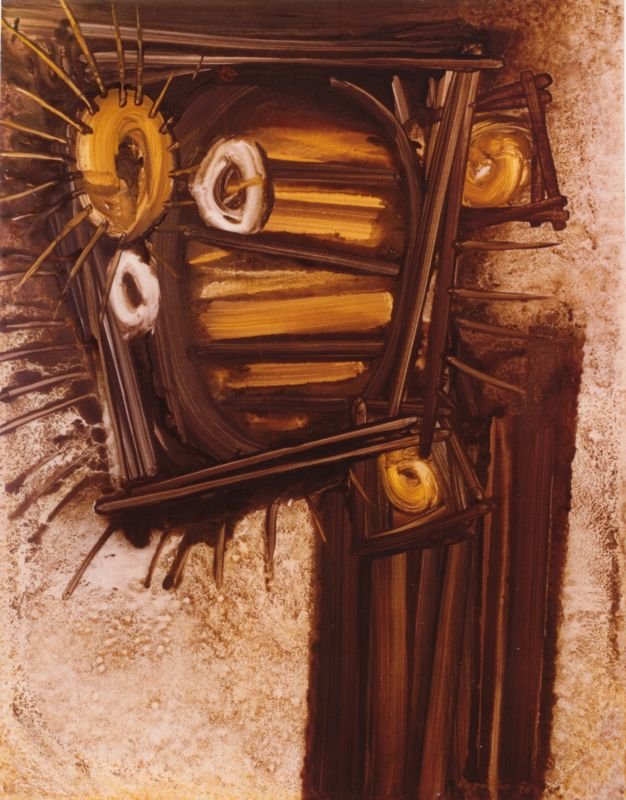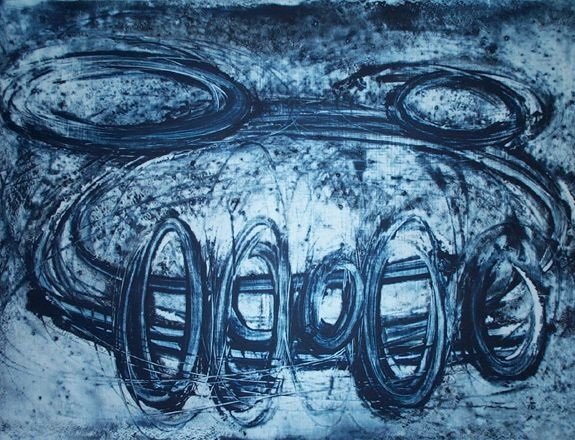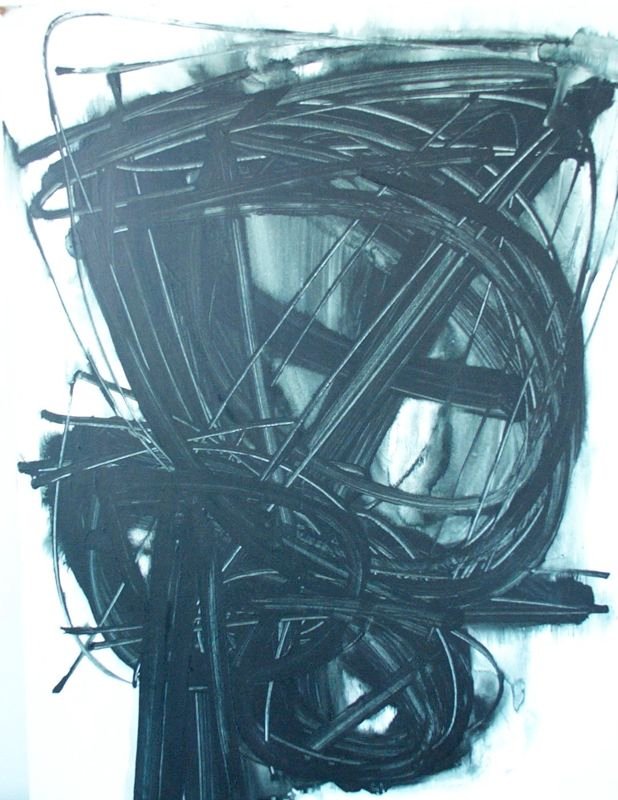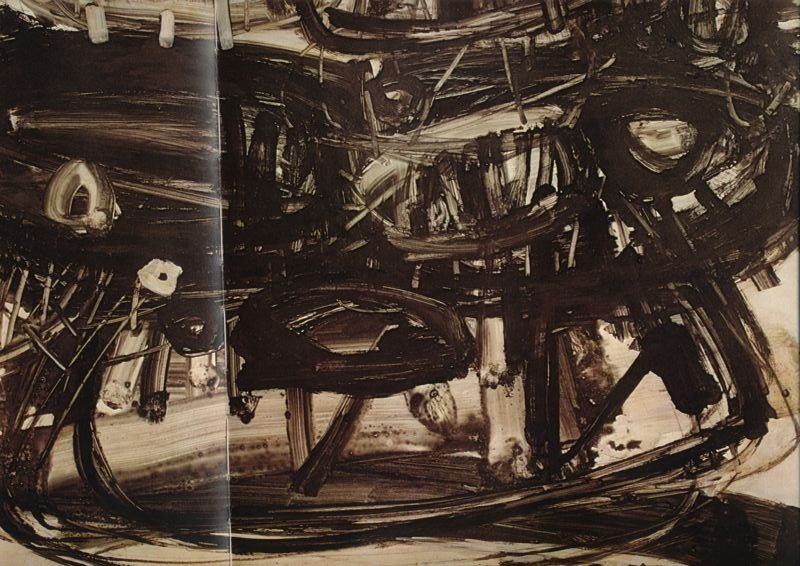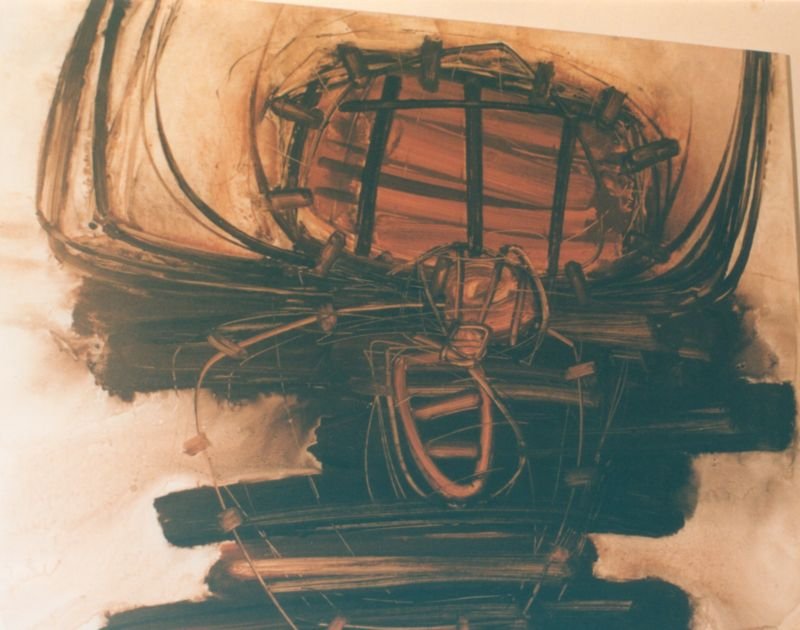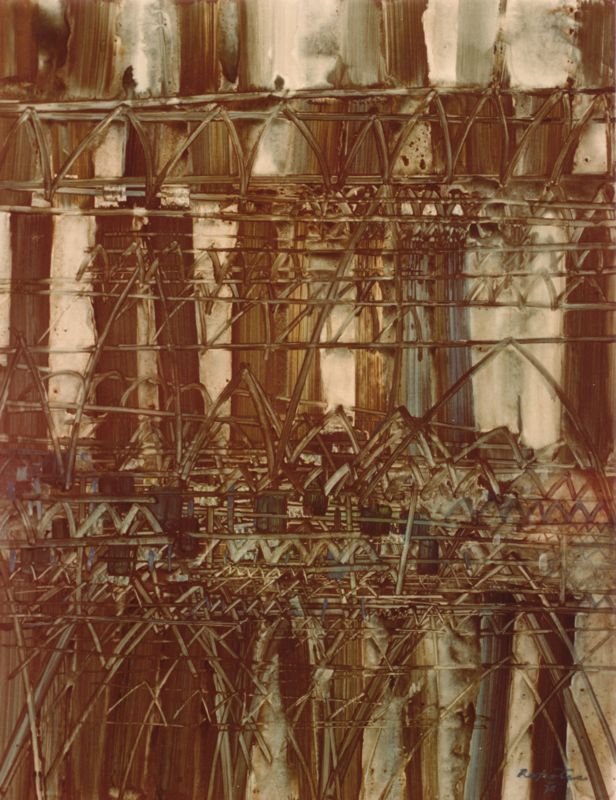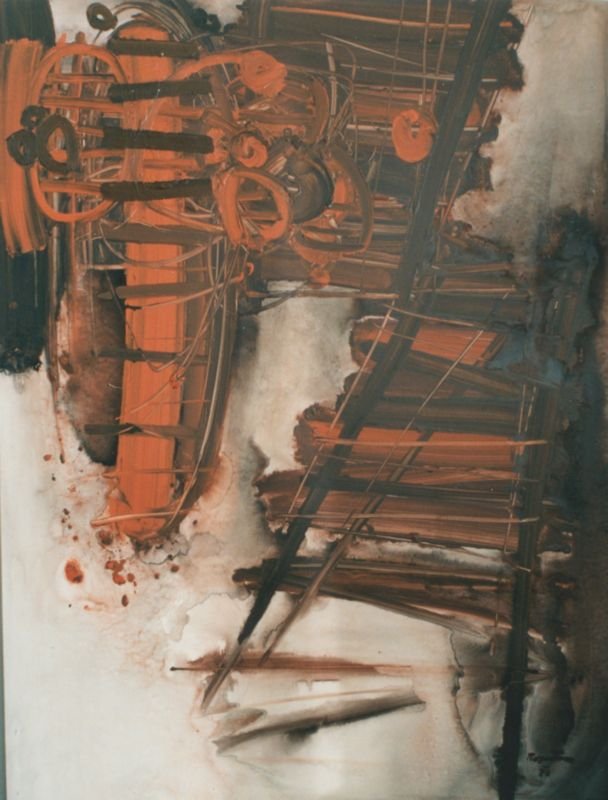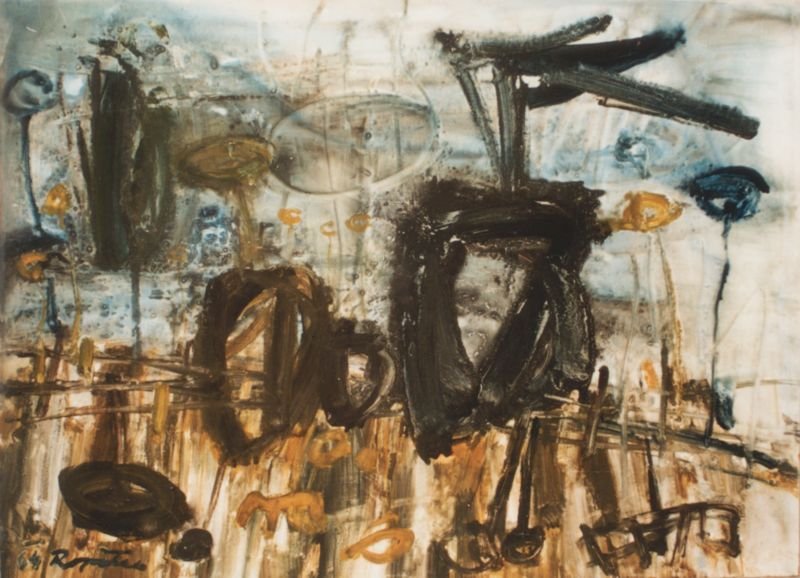Stanislaus Rapotec’s works are arresting, spontaneous and powerful. In his 2002 discussion of the large-scale painting Experience in the far West 1961. Daniel Thomas described Rapotec’s work as ‘explosive’ and ‘provocatively, pure abstract gestures from the subconscious’. In the words of Miriam Kelly, “Rapotec’s paintings are motivated by a personal and meditative approach to mark-making, which is inspired by memories of emigration, aspects of social and religious history, as well as his travels in Australia and abroad”. Born of Slovenian parents in Trst (Trieste), Stanislaus Rapotec (1913 – 1997) moved to Adelaide, South Australia in the late 1940s. One of the leading proponents of Abstract Expressionism in Australia, the first significant recognition for his talent came with the controversial win of the Blake Prize for religious art in 1961, the first abstract painting to be the recipient of this prize. Untitled (Hephaestos) is a fine example of the spirituality that dominated Rapotec’s artmaking throughout his painting career, it is religiosity that is not necessarily limited by Judaeo-Christianity, but also includes the myths of ancient Greece. Rich reds seemingly explode beyond the rectangular frame of the painting, an effect which is further enhanced through the use of roughly ground pigment to create texture on the board. The composition doesn’t aim to represent anything material but instead aims to capture through gesture in paint the intangible essence of Hephaestos the mythical god of fire and metal craftsmanship, otherwise known as the celestial artist.
